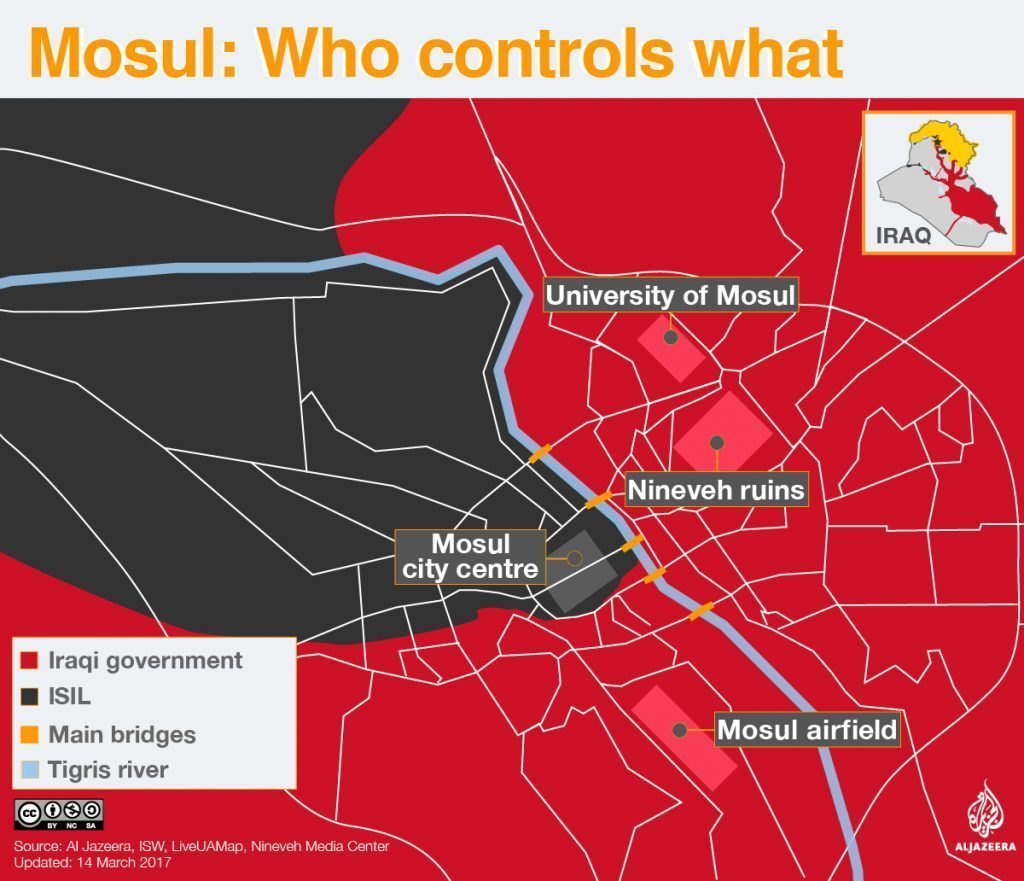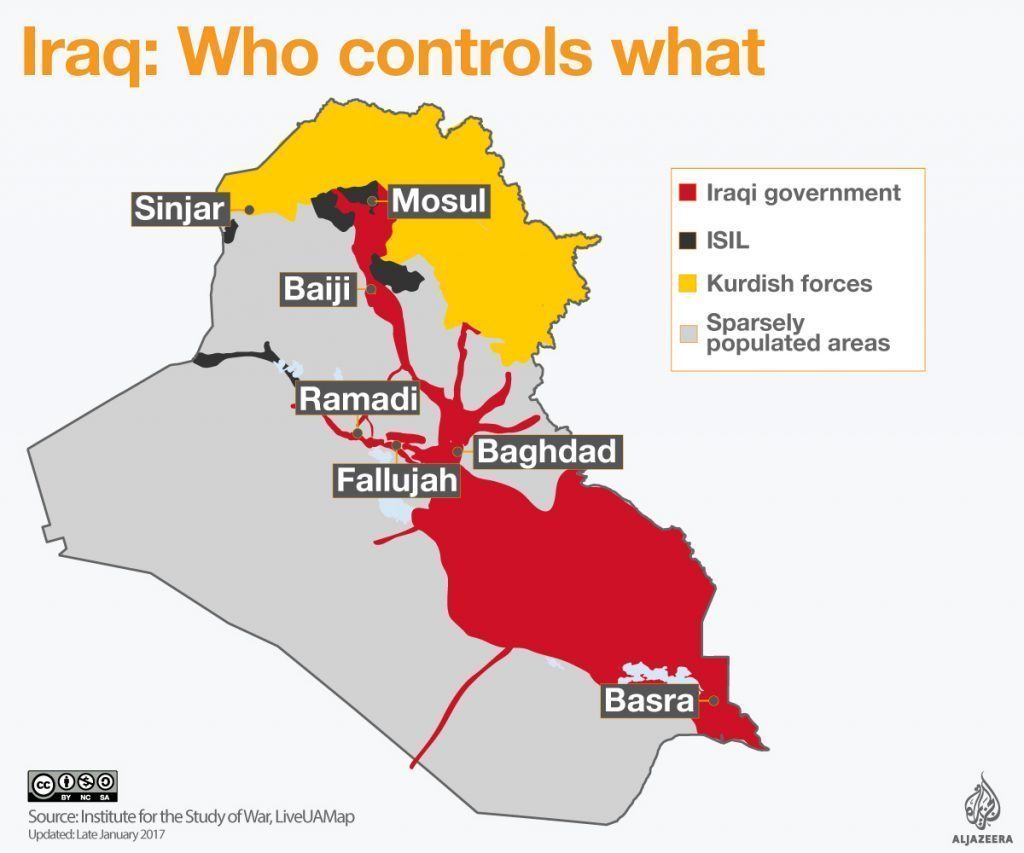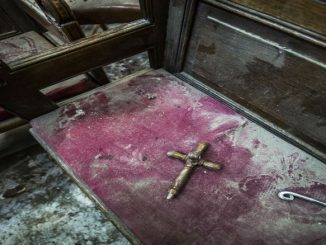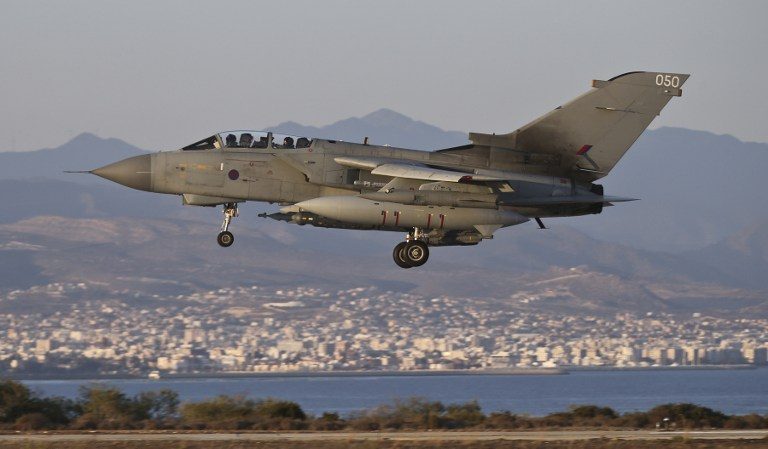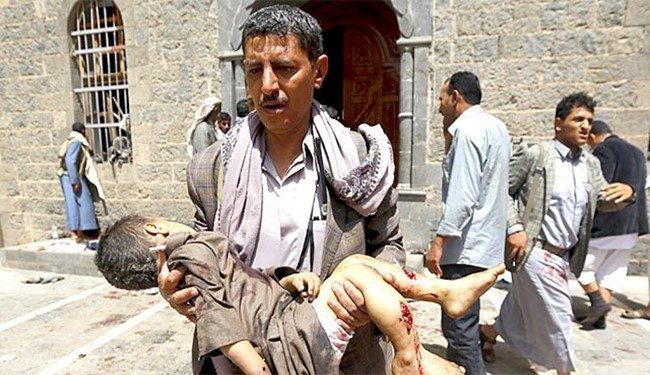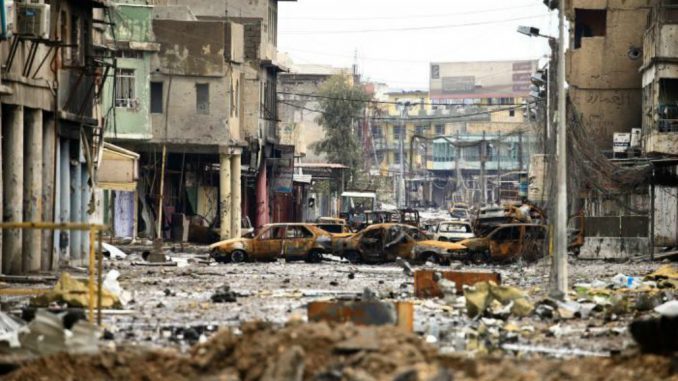
US-backed Iraqi force moved closer to Mosul’s Old City on Thursday after they took the third bridge on Tigris river on Wednesday, but their advancement was slowed greatly by ISIS fierce resistance.
At the height of its power two years ago, Islamic State ruled over millions of people in territory running from northern Syria through towns and villages along the Tigris and Euphrates river valleys to the outskirts of Baghdad in Iraq.
It was the mosque of Mosul where al-Baghdadi declared his Caliphate and named himself as the ruler of all Muslims from Mosul’s Great Mosque after his forces swept through northern Iraq in 2014.
However, ISIS’s territory is shrinking rapidly since last year as the US-led coalition, the Turkish-backed forces, and the Russian-backed Assad regime forces have fierce fights against its forces in both Syria and Iraq.
The United States is providing air and ground support to Iraqi and Kurdish forces trying to dislodge the hardline group from Mosul.
Iraqi forces captured the eastern side of Mosul in January after 100 days of fighting and launched their attack on the districts that lie west of the Tigris river on Feb. 19.
Islamic State militants who retreated across the Tigris river to western districts also regularly target civilian areas under government control in the east with mortars and grenades dropped from drones.
Several thousand militants, including many who traveled from Western countries to join up, are believed to be in Mosul among a remaining civilian population estimated at the start of the offensive at 750,000.
They are using mortars, sniper fire, booby traps and suicide car bombs to fight the offensive carried out by a 100,000-strong force made up of Iraqi armed forces, regional Kurdish peshmerga fighters and Iranian-trained Shi’ite paramilitary groups.
Third bridge retrieved
The seizure of the Iron Bridge, linking eastern Mosul with the militant-held Old City on the west side, brings the US-backed Iraqi forces closer to the old city and means the government holds three of the five bridges over the Tigris and bolsters Prime Minister Haider al-Abadi’s assertion that the battle is reaching its final stages.
The bridge, which was damaged in fighting late last year, was captured by federal police and Interior Ministry Rapid Response units, a police statement said.
“Our troops are making a steady advance … and we are now less than 800 meters from the mosque,” a federal police spokesman said.
According to Iraqi forces and their allies have been making steady progress in the city, forcing ISIS out of a series of neighborhoods and retaking important sites such as the airport, Mosul museum, train station and provincial government headquarters.
Moving closer to the old city
On of the important goal of the attack is edging closer to the historic mosque from which the ISIS’ leader declared a caliphate nearly three years ago.
The capture of al-Nuri Mosque would be a huge symbolic victory as well as a concrete gain, but the advancement in the area was greatly hindered by ISIS’ resistance.
“The mosque important for them, it’s where they declared their state,” Federal Police Major General Haider Dhirgham said.
A Federal Police officer said commanders were meeting to adjust their plans for tackling the Old City.
“The new offensive plans should adapt with the difficult terrain of the complicated, narrow alleys,” he said. “The tight roads prevent us from using armored vehicles and that will definitely leave our soldiers vulnerable to enemy fire.”
The need to ensure the safety of civilians, many of them hungry and traumatized by living under Islamic State’s harsh rule, was also a priority.
“The enemy … has started to set fire to houses, which means that are on the retreat. They have destroyed homes and have destroyed families,” Dhirgham said.
Islamic State hit back with sporadic attacks on government positions, including mortar fire. Suicide bombers had driven explosive-rigged cars at troops, Dhirgham said.
“We are holding positions we took yesterday. There is a lot of resistance in that area with snipers and car bombs,” Dhirgham said.
Government forces responded with mortars and helicopter gunships strafed militant positions from above.
Police said they had killed nine militants who tried to counter-attack one of their positions with rocket-propelled grenades.
“Federal Police drones bomb dozens of fixed and mobile ISIS targets in the perimeters of the Grand Mosque,” a later police statement said, using an Arab acronym for Islamic State.
Major General Dhirgham said the total retaking of the city was not yet imminent.
“I will not tell you one or two weeks because that’s not true, but within one or two months it will be completely liberated,” he said.
100.000 displaced in a month
As fighting intensified, civilians streamed out of western neighborhoods recaptured by the government,
desperate and hungry and traumatised by living under ISIS’s harsh rule. Some pushed children and sick elderly relatives in handcarts and wheelbarrows.
Soldiers packed them into trucks on the Mosul-Baghdad highway to be taken to processing areas.
As many as 600,000 civilians are caught with the militants inside Mosul, which Iraqi forces have effectively sealed off from the remaining territory that Islamic State controls in Iraq and Syria, while nearly 100,000 Iraqis have fled western Mosul in the past three weeks.
According to the IOM, between February 25 and March 15, more than 97,000 people were displaced, an increase of about 17,000 from the figure it released on Tuesday.
IOM said that the new figures, provided by the Iraqi government, showed that more than 116,000 people from the city’s west had gone through a screening site south of Mosul.
“Some families are still stuck,” Hajj Ahmed, a 55-year-old who had recently fled Mosul, told AFP news agency.
“They [ISIS] have been besieging people for seven days,” he said, before praising Iraq’s elite soldiers for saving them.
That number may still rise sharply. The United Nations last month warned that more than 400,00 people, more than half the remaining population in western Mosul, could be displaced. Fears of more chemical attacks are driving some people out.
“up to 450,000 are expected to make their way to the camps,” Lise Grande, humanitarian coordinator for the UN Assistance Mission in Iraq, said.
One civilian said that mortar rounds were falling as they fled. They took advantage of the army retaking their district to get out.
“ISIS wanted us to move to their areas but we escaped when the army arrived,” he said.
The World Health Organization has set up multiple trauma stabilizing points (TSP), as close to the frontlines as possible, Grande said. There, wounded civilians are given emergency care before being transporting to the nearest hospital.
“What is striking about this crisis is that half of the casualties are civilians,” said Grande.”TSP areas have had to dramatically expand. We were not expecting this amount of casualties.”
Out of the entire IDP population at the refugee camps, 56 percent are children under 18.
There are about 1,000 unaccompanied children who have been separated from their families while attempting to flee since the offensive on western Mosul began, said Grande. “They [unaccompanied children] are the most vulnerable. They require the most intensive care we provide.”

